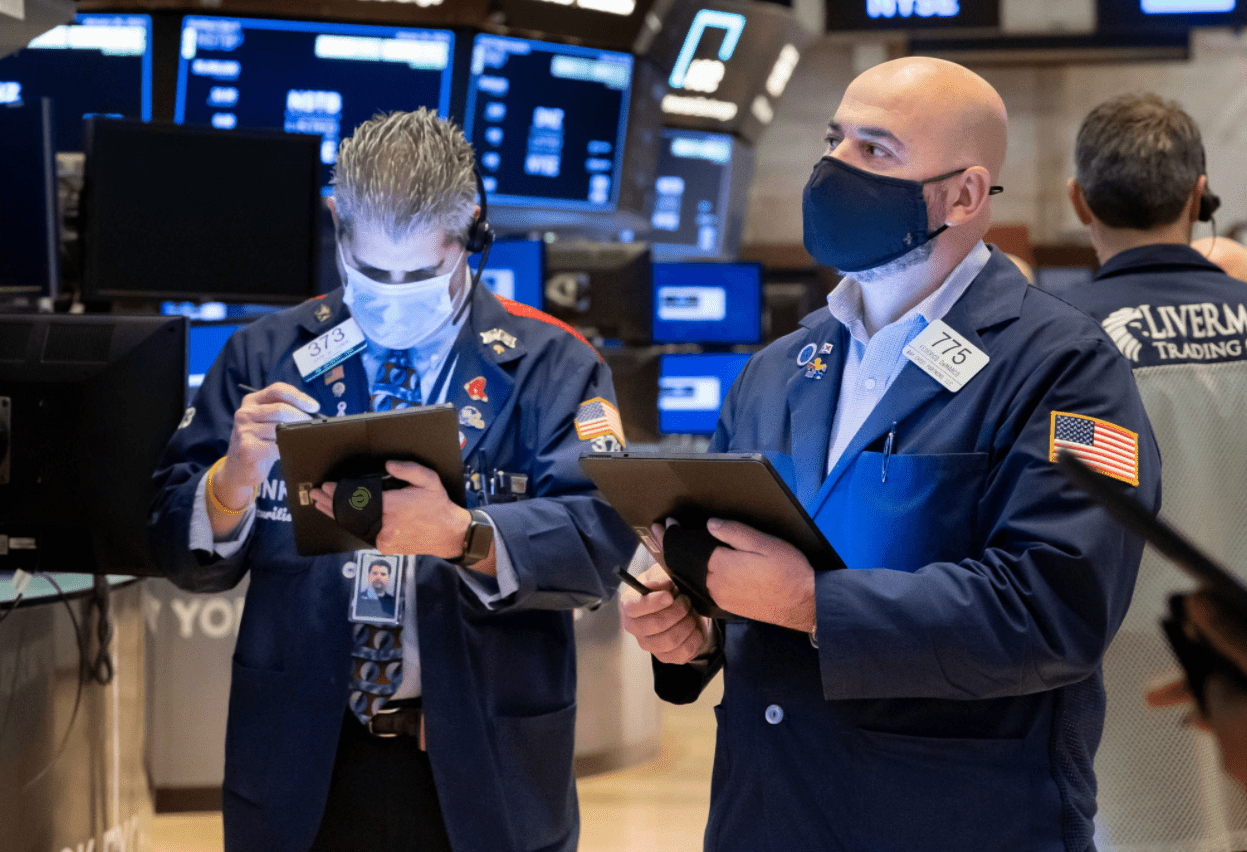The Dow Jones Industrial Average rose in volatile trading on Wednesday to hit another record close, boosted by a jump in Verizon and Chevron shares.
The blue-chip Dow erased a 180-point loss and ended the day 90.27 points higher, or 0.3%, to 31,613.02. The S&P 500 dipped less than 0.1% to 3,931.33, however, amid a 1% decline in the technology sector. The Nasdaq Composite fell 0.6% to 13,965.49 as Apple dropped 1.8%.
Dow-member Verizon was among the biggest gainers after Warren Buffett’s Berkshire Hathaway revealed a sizable stake in the telecom giant. The shares climbed 5.2% after the latest filing showed Berkshire bought more than $8 billion worth of the stock in the fourth quarter, making Verizon one of the conglomerate’s top six largest holdings.
Chevron jumped 3% as Berkshire revealed a large stake in the energy company as well last quarter.
The S&P 500 pared losses after the minutes of the last Federal Reserve meeting signaled that easy monetary policy will be in place for longer as the economy is nowhere close to pre-pandemic levels.
“Participants noted that economic conditions were currently far from the Committee’s longer-run goals and that the stance for policy would need to remain accommodative until those goals were achieved,” the minutes stated.
For traders worried about the Fed tapering, the central bank said its bond-buying program would continue at least at the current pace until “substantial further progress” toward their dual mandate, according to the minutes.
Surprise jump in retail sales
Investors also weighed improving economic data with rising inflation expectations. Retail sales surged 5.3% in January, blowing past a Dow Jones estimate of a 1.2% rise. The jump in consumer spending could further fuel inflation expectations, which have already pushed bond yields significantly higher recently.
Signs of a pickup in pricing pressures already emerged as the economy rebounds from the pandemic-induced recession amid historic fiscal and monetary stimulus. The Labor Department said Wednesday the producer price index, a measure of the prices businesses receive for their goods and services, rose 1.3% in January, the biggest jump since the index began in December 2009.
The retail sales data “fits in perfectly with the present narrative of strong earnings/growth (and rising inflation) and will place further upside pressure on Treasury yields,” Adam Crisafulli, founder of Vital Knowledge, said in a note.
The 10-year Treasury yield hit a one-year high of 1.33% on Wednesday before turning flat. The 30-year yield retreated slightly from its highest level since February, but still held above 2%.
Some on Wall Street believe higher rates could eventually prompt investors to rotate out of high-flying risk assets and into bonds, while they could hamstring growth companies, which have benefited from the low-rate environment.
“At some point if long rates continue to rise and things start to break, we’re going to have an epic still cage match between central bankers and markets and we’ll see if the former wants to fight the latter in terms of control,” said Peter Boockvar, chief investment officer at Bleakley Advisory Group.
On Wednesday, the Cboe Volatility Index, also known as Wall Street’s best fear gauge, rose above 21. The VIX closed below 20 on Friday in the first significant breach of the threshold since February 2020.
Elsewhere in the market, bitcoin topped $52,000 for the first time as its dizzying surge to record highs continued.

